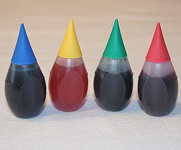Artificial Food Colors may be Dangerous for Children

A new research commissioned by the UK’s Food Standards Agency found that artificial colors used in making food attractive and tasty may be life-threatening to the health of children as it links them to hyperactivity.
Studies done earlier had linked artificial colors to behavioral problems in the children, but this is the FSA’s first study commissioned to investigate the link between the two.
Hyperactivity involves over-activity, inattention and impulsivity for study purposes.
ADHD (Attention Deficit Hyperactivity Disorder) is hyperactivity’s extreme form, and is linked to genes, premature birth, and upbringing. Hyperactivity leads to loss of concentration and impulsive behavior in children.
ADHD is one of the most common neurological conditions found in children. The study’s results proved unreliable because parents observed the effects on children and that these were not confirmed by independent observers and clinicians. The earlier study showed a strong “Placebo” effect in which many children appeared to be fine with additives, but developed problems when given placebos.
So, the current study was projected considering guidelines issued by Food Additives and Behavior in Children (FABIC) and the Committee on the Toxicity of Chemicals in Food, Consumer Products and the Environment (COT).
The study’s results are published in ‘The Lancet’ and for evaluation these were delivered to the independent Committee on Toxicity (COT).
Professor Ieuan Hughes, the chair person of the COT, said “Whilst this research does not prove that the colors used in the study actually cause increased hyperactivity in children, it provides supporting evidence for a link. It is important to stress that the currently available evidence does not identify whether this association would be restricted to certain food additives or combinations of them”
Dr. Andrew Wadge, the FSA’s Chief Scientist, said, “The study was helpful in identifying another factor that could alter children's behavior.”
“After considering the COT’s opinion on the research findings, we have revised our advice to consumers: if a child shows signs of hyperactivity or Attention Deficit Hyperactivity Disorder (ADHD) then eliminating the colors used in the Southampton study from their diet might have some beneficial effects,” he added.